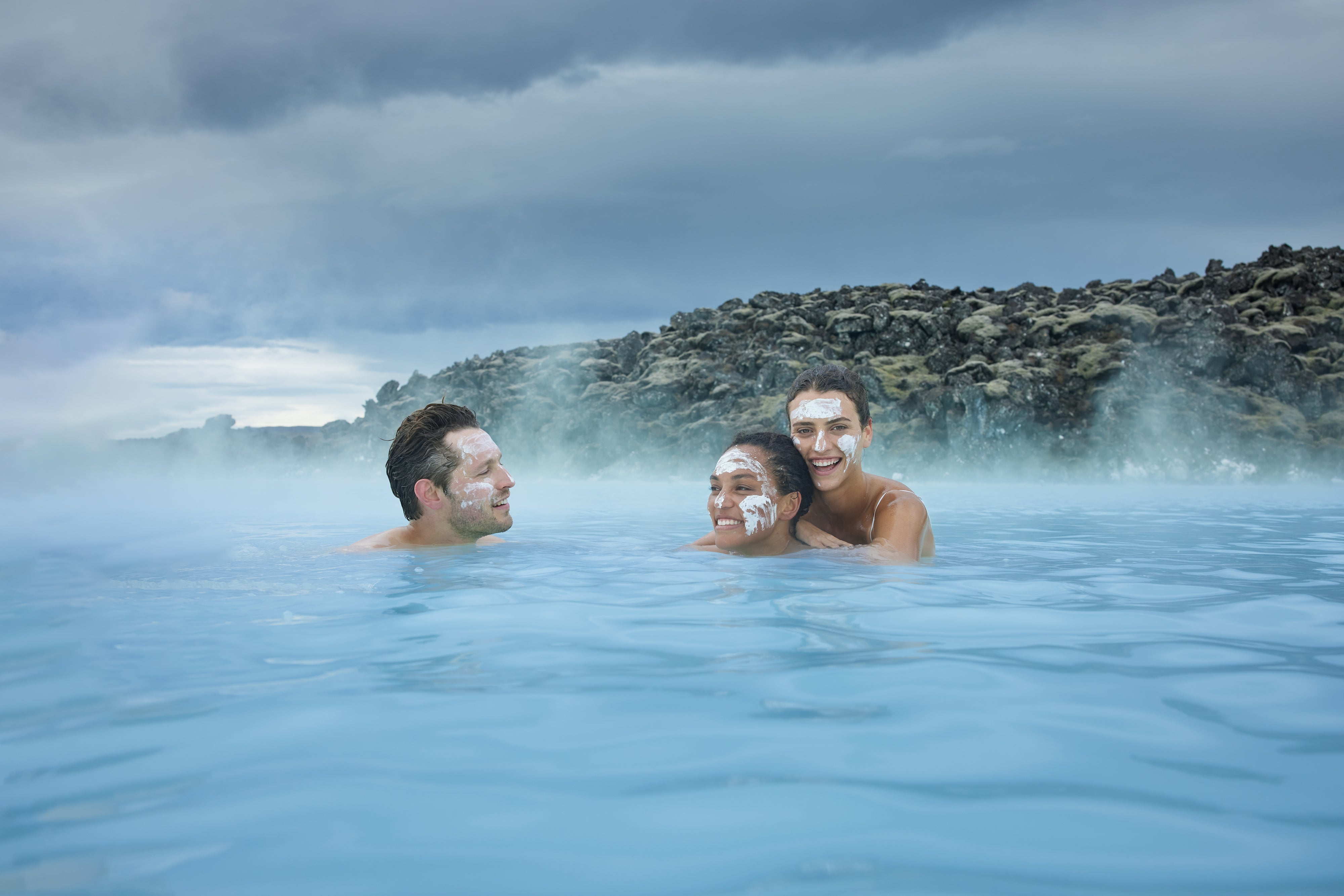"Traveling is such a mentally demanding task. As a healthcare/mental health expert, what is the best way to not be burned out? Give me scientific evidence of why your suggestion works." Here is what 7 thought leaders have to say.
- Balance Dopamine Levels to Prevent Burnout
- Take Time to Rest and Recharge
- Use Somatic Therapy to Manage Stress
- Practice Rhythmic Breathing for Stress Relief
- Regulate Sleep Cycle to Avoid Burnout
- Schedule Recovery Time After Trips
- Minimize Decision Fatigue and Prioritize Sleep
Balance Dopamine Levels to Prevent Burnout
Traveling is definitely a privilege however burnout is possible. The neurotransmitter that is associated with travel is that reward chemical dopamine, it can be addictive. High levels of dopamine increase addictive behaviors, anxiety, aggression, and poor impulse control among other negative reactions. In the book, "Dopamine Nation" by Anna Lembke, MD she states that our brains are not evolved enough to handle an overload of this neurochemical. Lembke stresses the importance of balance otherwise a "dopamine deficit state" can occur. When studying balances in dopamine we can give surveys, notice behaviors, and conduct interviews before and after travel. These ways of researching the process in travel can provide the necessary interventions to prevent burnout from happening. Correlational studies can help us look at the relationships between variables to see how associations get identified.
Christina Harrington-Stutzmann, LCSW-R, LMFT, LMHC, Licensed Psychotherapist, Christina Harrington-Stutzmann
Take Time to Rest and Recharge
Take Time to Rest
Traveling can be draining, especially when there's this pressure to see everything and do it all. From my perspective, I always suggest giving yourself space to recharge. You don't have to be on the go all the time. Even just doing nothing for a bit helps. Science backs this up. Taking time to rest helps lower stress and recharge your energy. Your brain needs those breaks to feel refreshed and stay balanced.
And when you're traveling, don't let other people dictate your experience. It's your trip, and you have every right to do things your way. It's nice to meet fellow travelers, but if someone starts trying to take over your plans, it's totally fine to step back. Saying no is okay. You don't owe anyone your time. Make sure to do the things that excite you, even if someone else thinks they're too "touristy."
Chris McDermott, Certified Life Care Planner, Intercoastal Consulting & Life Care Planning
Use Somatic Therapy to Manage Stress
Traveling can indeed be challenging, but a structured approach rooted in evidence-based techniques can help prevent burnout. From my experience with trauma and attachment issues, I emphasize integrating somatic therapy principles during travel. Focusing on bodily sensations, like deep breathing or scanning for tension, can help reset the nervous system and promote a state of calm, backed by neuroscience research.
A real-world application comes from the Safe and Sound Protocol, which profoundly impacts emotional regulation by using specific auditory interventions. Travelers can use curated playlists designed to engage the vagus nerve, reducing stress and enhancing resilience. This approach aligns with the Polyvagal Theory, which underscores the power of the vagus nerve in managing stress responses.
Additionally, embracing an Internal Family Systems (IFS) approach can help manage internal stressors. By recognizing and engaging with different parts of oneself, travelers can maintain internal balance and address stressors proactively. One client I worked with found that naming and comforting their anxious part during flights significantly reduced in-flight anxiety.
Lauren Hogsett Steele, Therapist, Pittsburgh Center for Integrative Therapy
Practice Rhythmic Breathing for Stress Relief
Traveling can indeed be challenging for mental health, particularly when balancing work and personal life. As a Clinical Psychologist specializing in perinatal mental health, I know the importance of structured routines to avoid burnout. One strategy I've employed is integrating evidence-based techniques like rhythmic breathing to manage stress, especially during hectic travel schedules. This approach can mitigate stress by engaging your parasympathetic nervous system to promote calmness.
A routine that has been effective for clients includes engaging in short, focused breathing exercises. For example, a simple exercise like imagining a clock face and breathing in for a count of six, then out for the same count, can interrupt the stress cycle. Studies support that breathing techniques help reduce stress hormones, leading to improved mental resilience, which is crucial when navigating travel-related pressures.
Additionally, make use of travel time as an opportunity to mentally disconnect by listening to meditative audio content or podcasts aligned with personal interests. This creates a mental buffer, changing travel into a space for personal growth or relaxation, reducing overall burnout risk, and allowing one to arrive both mentally refreshed and prepared.
Dr. Rosanna Gilderthorp, Clinical Psychologist & Director, Know Your Mind Consulting
Regulate Sleep Cycle to Avoid Burnout
The best way to avoid burnout while traveling is to regulate your sleep cycle as quickly as possible. Travel, especially across time zones, disrupts the body's natural circadian rhythm, which controls energy levels, mood, and cognitive function. When sleep is thrown off, stress hormones like cortisol increase, and the brain struggles to process information efficiently. This can leave you feeling mentally drained, irritable, and physically exhausted.
Science backs this up. Research published in the journal Sleep Medicine Reviews shows that misalignment of the circadian rhythm leads to impaired memory, reduced concentration, and heightened stress responses. When traveling, adjusting your sleep schedule before departure can make a difference. Exposing yourself to sunlight at your destination during the morning hours helps reset the body's internal clock. Avoiding caffeine and electronic screens before bed also allows melatonin, the sleep hormone, to work properly, improving sleep quality.
Ann Monis, CEO & Co-Founder, Medical Anti-Aging
Minimize Decision Fatigue and Prioritize Sleep
Travel can be incredibly mentally taxing, especially for healthcare professionals who already manage high cognitive and emotional loads daily. To prevent burnout while traveling, I recommend a "preparation and recovery" approach based on cognitive load theory and stress-reduction techniques backed by research.
1. Minimize Decision Fatigue (Cognitive Load Theory)
Why it works: The brain has a limited capacity for decision-making before experiencing fatigue. By planning logistics ahead—flights, accommodations, and itinerary—you reduce the number of decisions needed on travel days.
How to apply: Use checklists, pre-book transportation, and pack efficiently to prevent unnecessary cognitive overload.
2. Prioritize Sleep and Circadian Rhythm Regulation
Why it works: Sleep disruption, particularly from jet lag, affects cortisol levels and impairs cognitive function (Walker, 2017). Lack of sleep can increase emotional reactivity and decrease resilience to stress.
How to apply: Adjust your sleep schedule gradually before departure, get sunlight exposure upon arrival to reset your internal clock, and avoid excessive caffeine or alcohol.
3. Use Mindfulness to Regulate Stress
Why it works: Mindfulness has been shown to reduce cortisol levels and increase prefrontal cortex activity, improving emotional regulation (Creswell, 2017).
How to apply: Practice mindfulness techniques such as deep breathing, grounding exercises, or short meditations during transit and before sleep.
4. Maintain Movement and Hydration
Why it works: Research suggests that physical activity reduces stress and improves cognitive function by increasing brain-derived neurotrophic factor (BDNF) (Ratey, 2008). Dehydration can also negatively affect mood and cognition.
How to apply: Take short walks, stretch during layovers, and drink plenty of water to keep energy levels stable.
5. Set Realistic Expectations & Build in Recovery Time
Why it works: Burnout is partly caused by overloading the autonomic nervous system with too many stressors (Maslach & Leiter, 2016). Giving yourself permission to rest before and after travel prevents long-term exhaustion.
How to apply: Avoid overpacking your itinerary, schedule downtime, and allow for a transition period when returning from a trip.
By combining these strategies, travel becomes less mentally draining and more restorative. What type of travel tends to exhaust you the most—logistics, social interactions, or the disruption of routine?
Lisa Hillary, Psychotherapist & Owner of Hillary Counseling, HILLARY COUNSELING
Conclusion:
Traveling can be mentally and physically demanding, but with the right strategies, it doesn’t have to lead to burnout. These expert-backed approaches emphasize the importance of balance, self-care, and intentional planning. Whether it’s regulating dopamine levels, prioritizing sleep, using breathing techniques, or simply allowing time to recover, science supports these methods in reducing stress and maintaining mental well-being.
The key is to listen to your body and mind, create space for rest, and avoid overloading yourself with too many activities or decisions. By implementing these strategies, travel can remain an enjoyable and rejuvenating experience rather than a source of exhaustion.














